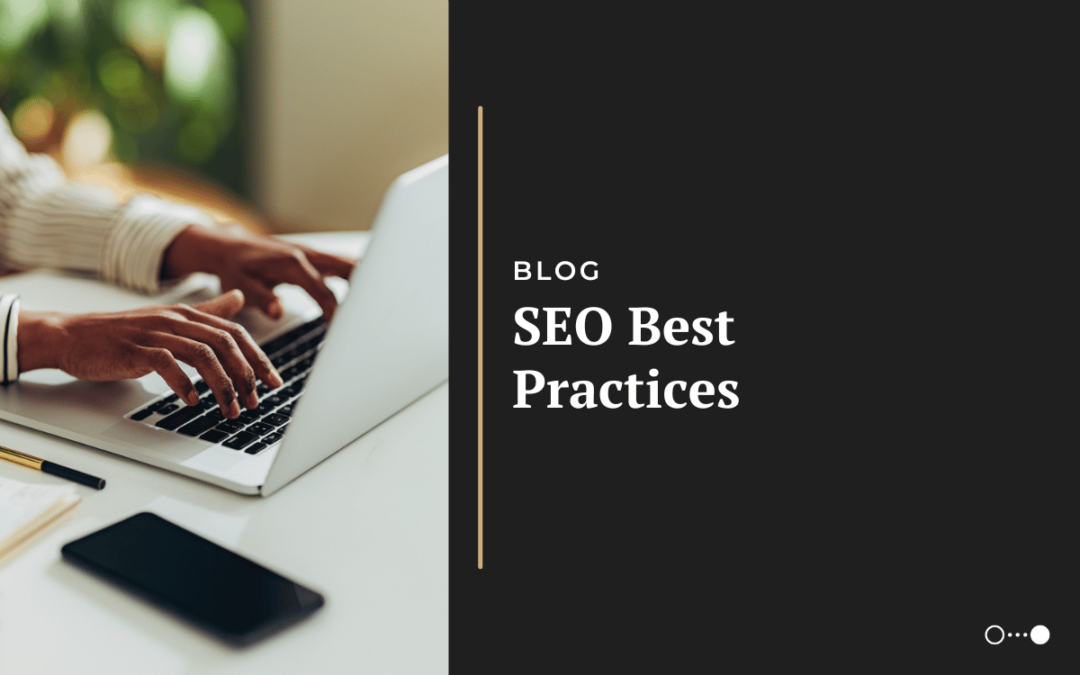Search engine optimization (SEO) is the process of improving the quality and quantity of website traffic to a website or a webpage from search engines. This is a very important component of any business plan: Without SEO, you could be missing out on potential clients or customers simply because they can’t find you online.
According to HubSpot, 75% of people who search for things online never go past the first page of search results. So if your website isn’t ranked on that first page, chances are it’s not getting visitors, which in turn means you’re missing potential clients and customers — negatively impacting your business’s bottom line. There are many different ways in which you can attempt to organically increase your website’s online visibility. In this article, we’ll cover three of the best SEO practices to ensure your website ranks highly in search results.
Conducting Thorough Keyword Research
The first step in the SEO process should always be to conduct keyword research. Keyword research is the process of discovering what people are searching for, how they are searching for it, and how many people are searching for it. Some helpful tools you can use to do this research include Semrush, Ahrefs, and Moz. This information is crucial to understand because once you know what people are searching for and how they are searching for it, then you can better understand how to structure your website content in a way that matches their intent.
For example, if you own a flower shop in Austin, Texas, it makes sense to want your website to rank highly in the search results for keywords related to flowers and flower shops. However, there are a multitude of ways in which a user can search for this, and that’s where keyword research comes into play. After conducting keyword research, you’ll have a better understanding of what keywords to use on your site, and how to structure it in a way that fits what users are looking for.
Optimizing Your Page Titles and Meta Descriptions
After you’ve finished your keyword research, the next step is to use those keywords on your site, and one of the best places to use them is in your page titles and meta descriptions. Below is a screenshot of where the page titles and meta descriptions are located in search results.

It’s important to place your keywords here because not only are they the first things users see before clicking on your webpage, they’re also two of the most important factors in Google’s algorithm that determines where they rank pages in search results. Below are some important things to keep in mind when writing these.
Page Titles
When writing page titles, remember there’s limited space. If you use too many characters, you run the risk of Google automatically cutting off part of your page title, and that will have a negative impact on your rankings. To ensure your page title isn’t too long, you can click here to check. Additionally, you want to make sure you use your targeted keywords first, and everything else comes after. Below is an example:
Homepage Example: Targeted Keyword(s) | Business Name
Secondary Page Example: Targeted Keyword(s) | Secondary Page (Contact Us, Services, Blog, etc.) | Business Name
The final thing to remember when writing these is they have to be relevant to the page you are describing. Sticking with our flower shop example from earlier, you wouldn’t want to use the keyword “tulips in Austin for sale” in the page title for your homepage. That keyword is best suited to be used on a secondary page that specifically mentions tulips. It would be best to use a broader keyword such as “Austin, TX Flower Shops” because it more accurately describes the homepage and the business as a whole.
Meta Descriptions
Just like page titles, meta descriptions also have a limited amount of space you can use before being cut off automatically by Google. While meta descriptions don’t directly impact search rankings, they do impact the click-through rate (CTR). Because of this, make sure your meta descriptions are written in a way that entices users to click on your page — and always try to include a call to action (CTA) as well. The more compelling your meta description is, the more likely it is a user will want to visit your website.
Using Keywords in Your Site’s Content
After you’ve placed keywords in all your page titles and written compelling meta descriptions, the next step would be to place them in your actual site content — more specifically, as H1s. An H1 is the main header of a webpage, and just like page titles, is one of the most important factors in Google’s algorithm that determines where they rank pages in search results. Each page on your site should only contain one H1 tag, and it should be one of your targeted keywords. If you have more than one H1 tag on a webpage, Google’s algorithm won’t know which one to read. If it reads the wrong one, that could have a negative impact on your rankings. The H1 tag should also be relevant to the page content as well, just like page titles.
Conclusion
These tips are the basics when it comes to SEO best practices. While there are certainly more factors that play into it, just doing the above can significantly increase your website’s online visibility. If you have any questions or would like to connect about how we can help you with an SEO strategy, please contact us.

